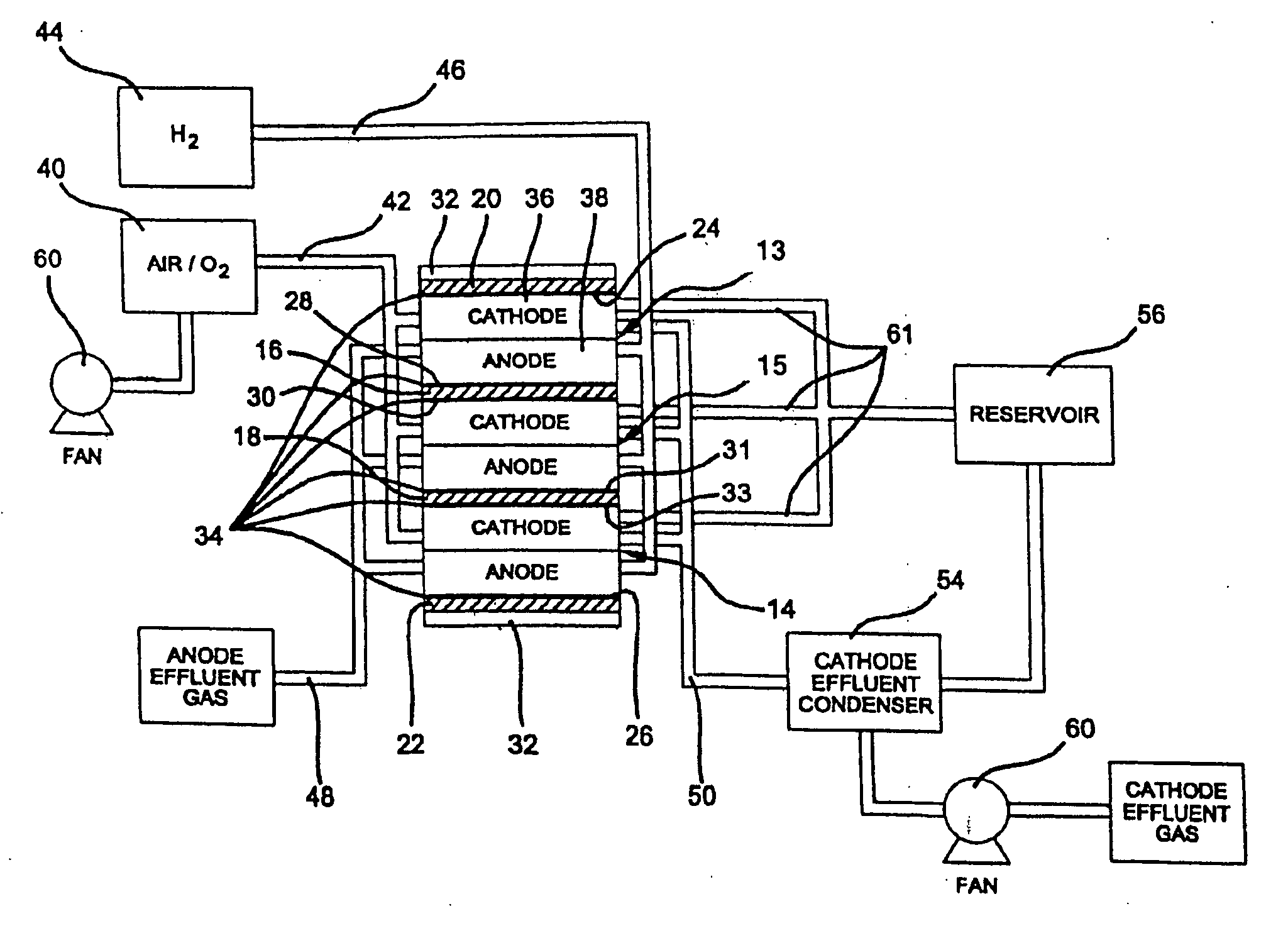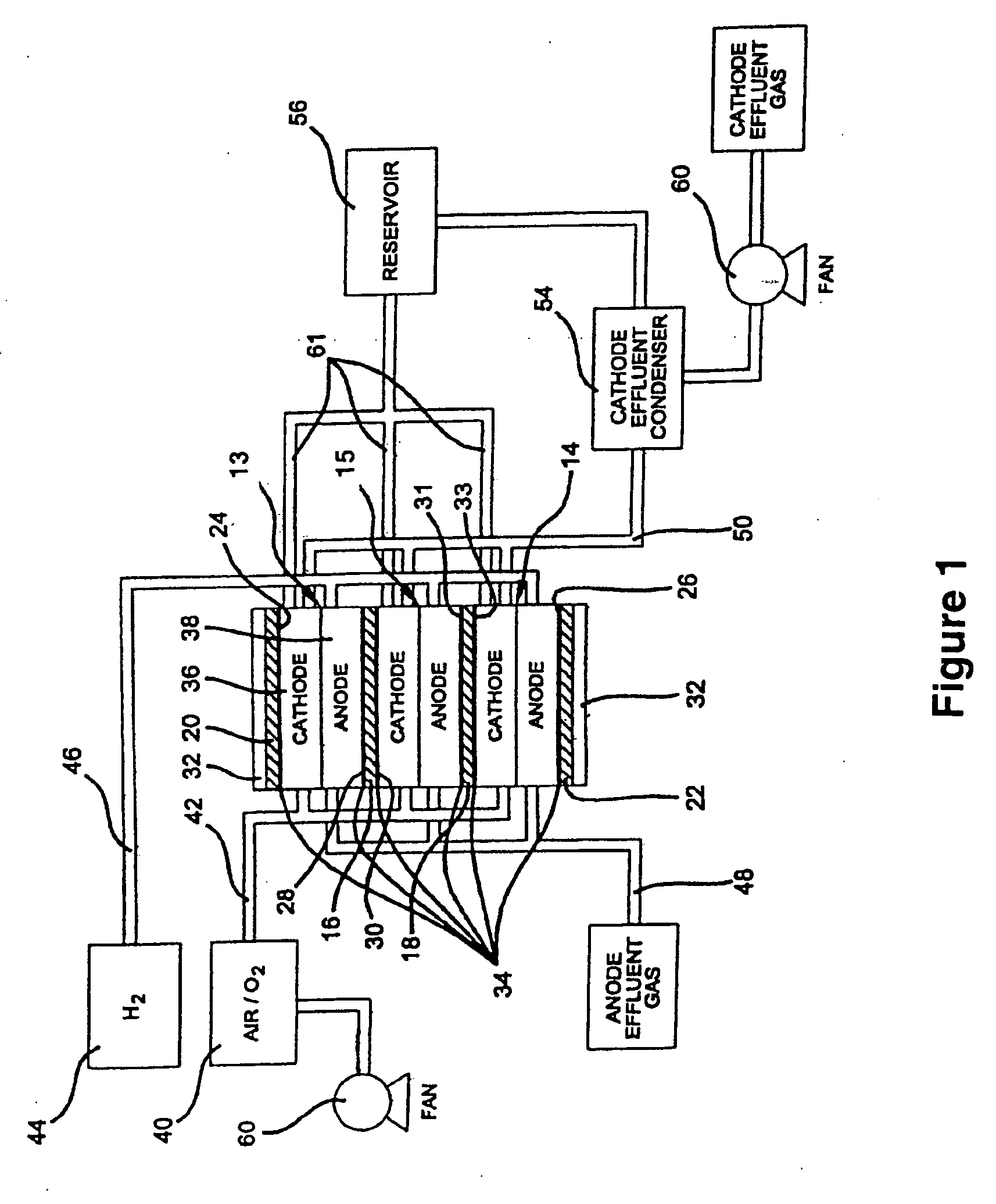Sulfonated polyelectrolyte membranes containing perfluorosulfonate ionomers
- Summary
- Abstract
- Description
- Claims
- Application Information
AI Technical Summary
Benefits of technology
Problems solved by technology
Method used
Image
Examples
example 1
Sulfonation of PPS Films with Chlorosulfonic Acid at 25° C.
[0036] Dichloromethane (50 mL, 66 gm) and chlorosulfonic acid (between 0.7 and 1.4 gms) are added sequentially to a wide mouth glass bottle (120 mL capacity, 2 inch diameter). 10 mL of this solution are added to dichloromethane (50 mL, 66 gms) in a wide mouth glass jar (410 mL, 3 inch diameter). To this mixture is added a 1 mil (0.001 inch, 0.0025 cm) colorless film of PPS (Chevron-Phillips) consisting of a circle with a diameter of 2.75 inches and weighing between 0.14 and 0.18 gm. The jar is sealed with a screw cap lid and the film is allowed to react for various amounts of time at 25° C. while being suspended in the reaction solution. The insoluble colorless film is observed to turn blue-green and then black after several seconds of immersion in the reaction solution. After a variable time of reaction, the black film is then added to distilled water (200 mL) and the film turned light yellow. The film is washed extensivel...
example 2
Sulfonation Reaction at 40° C.
[0037] The reaction described above is repeated at 40° C. After 4 hours, the amount of sulfonation is determined by titration with 0.01 molar sodium hydroxide to be 2.36 meq / g SO3H. The physical properties of the film are better than those with membranes having similar ion exchange capacities made at 25° C.
example 3
SPPS Imbibed with PFSA Ionomer
[0038] Ryton 16 C (a 2 mil polyphenylene sulfide film of Chevron-Philips) is sulfonated at 2.3 meq SO3H / g (SPPS). The sulfonated film is immersed at room temperature in an aqueous 1-propanol solution or dispersion of Asahi Kasei Aciplex® 910 / 05SS (containing 4-6 wt. % of PFSA of equivalent weight 910) for a few seconds until the immersed film stops visible swelling. It is then spread out on a piece of glass and then dried at room temperature. The dried film has a thickness of about 1 mil. The uptake of PFSA by the film is about 13% by weight. The resultant SPP-PFSA composite membrane displays proton conductivity that is about one-half that of Nafion 112 at 50% relative humidity (rh), while the conductivity at high rh is higher than that of Nafion 112. The crossover point for the respective conductivity curves for the Nafion 112 and the SPPS-PFSA blend is at about 70% rh.
PUM
| Property | Measurement | Unit |
|---|---|---|
| Temperature | aaaaa | aaaaa |
| Fraction | aaaaa | aaaaa |
| Percent by mass | aaaaa | aaaaa |
Abstract
Description
Claims
Application Information
 Login to View More
Login to View More - R&D Engineer
- R&D Manager
- IP Professional
- Industry Leading Data Capabilities
- Powerful AI technology
- Patent DNA Extraction
Browse by: Latest US Patents, China's latest patents, Technical Efficacy Thesaurus, Application Domain, Technology Topic, Popular Technical Reports.
© 2024 PatSnap. All rights reserved.Legal|Privacy policy|Modern Slavery Act Transparency Statement|Sitemap|About US| Contact US: help@patsnap.com










